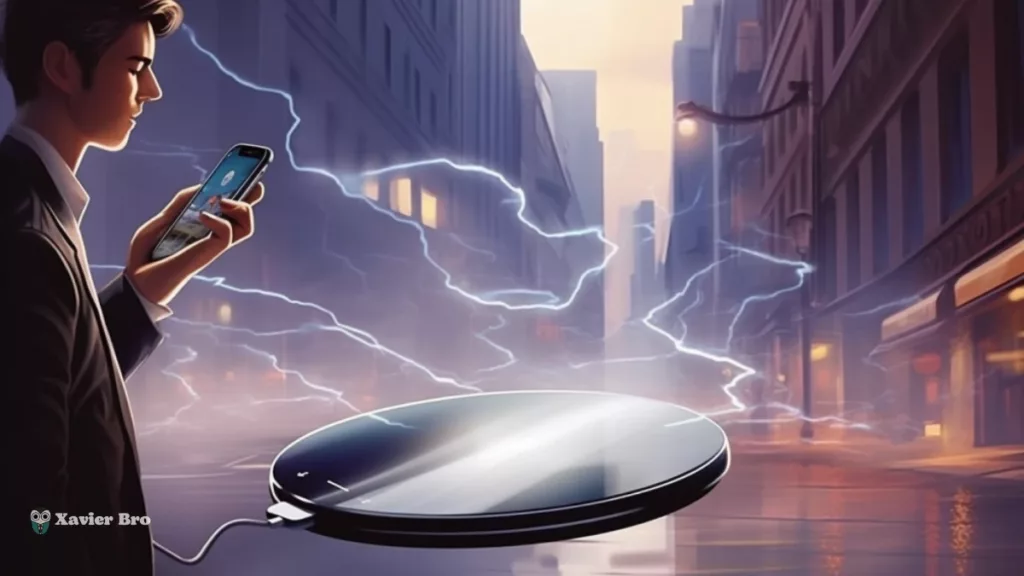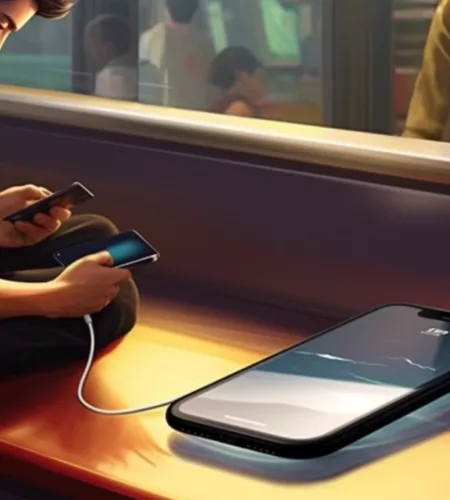Wireless charging lets you power up phones, earbuds, watches, and other gadgets without wires. It transfers energy from a charger to a device when close together. Just put your device on a charging pad, and it will start charging! This handy cordless charging is getting very popular as it makes charging simple. But as with any new tech, it has upsides and downsides. Before you ditch cords, read this ultimate guide to see wireless charging benefits and drawbacks.
Key Takeaways
- Wireless charging transfers energy between a pad and a device using magnetic signals.
- Wireless charging has benefits like being more convenient, flexible, and safer for devices.
- It has drawbacks like being slower, less efficient, and more expensive than wired charging.
- Wireless phone charging is convenient but still charges devices slower than wired. As technology keeps advancing and getting faster in the future, the gap will narrow.
How Does Wireless Charging Work?
Wireless charging works through electromagnetic energy transfer between two coils – a transmitter and a receiver. The transmitter coil links to a power outlet and makes an oscillating magnetic field. Putting a device with a receiver coil close by creates an electrical current that charges the device’s batteries.
The coils don’t need direct contact, just close positioning. Most wireless chargers use the Qi standard and work with different devices. The technology offers a convenient way to power up devices wirelessly, eliminating the need to manually plug in and reboot Samsung phones or other compatible devices. Now, dig into the wireless charging benefits and drawbacks.
Benefits of Wireless Charging
Here are some of the most notable benefits that wireless charging provides over traditional charging cables:
Convenience
The top benefit of wireless charging is effortlessness. You skip repeatedly connecting and disconnecting your device to charge it. Simply put your device on a charging pad, and powering up begins. This also avoids damage to the charging port from frequent plugging and unplugging.
Universal Standard
Wireless charging has become more common through the Qi standard many big device makers use. With the same charging pad, you can power up Qi-compatible Android phones, iPhones, earbuds cases, and more. You skip needing to carry particular charging cables for specific devices. Wireless charging makes keeping devices powered up simple and unified.
Flexibility
Wireless chargers come in many types, like stands, pads, and built-in surfaces. With wireless charging, you can power up your phone on your desk, in the car, or even at coffee shops and airports. Having so many options makes charging easy no matter where you are.
Water and Dust-Resistance
Wireless charging allows for better water resistance and dust protection on devices with no ports or exposed contacts. For example, smartphones with wireless charging can achieve higher IP water resistance ratings for using the technology.
Enhanced Aesthetics and Design
Wireless charging looks nicer and gives more design options. It doesn’t need ports or cables. This gives a cleaner look. The charging stations can blend into desks and nightstands without being messy. Devices can be designed in new ways since they don’t need ports.
Safer Charging
Wireless charging produces less heat compared to traditional wired fast charging. This puts less strain on device batteries, allowing for safer long-term charging.
Drawbacks of Wireless Charging
While wireless charging technology has valuable benefits, it also comes with some drawbacks:

Slower Charge Speeds
Wireless charging lets you power up phones without plugging them in. But it charges slower than using a wire. Wires give phones a bigger jolt of power to charge up faster. New wireless chargers will get faster, too. Soon, phones can charge fast with or without a wire.
Positioning Challenges
Wireless charging needs the device to be placed on the charging pad. The device must stay centered and face the right way. If it moves even a little bit, the charging gets disrupted. Thick cases can also get in the way and stop the charging from working.
Higher Costs
It costs more to make wireless charging work. So, phones with wireless charging are more expensive to buy. The wireless chargers you need to buy are also pricier than wired chargers. Overall, wireless charging makes you pay more. Plain wired charging is still cheaper.
Inefficiency
Inductive charging isn’t as efficient at energy transfer, with some power lost during wireless transmission. Depending on factors like coil distance, this can result in about 10-45% higher energy consumption than wired charging.
It’s worth noting that this disparity is particularly noticeable when a laptop is plugged in, as the wired connection tends to be more energy-efficient in such scenarios.
Limited Use Cases
Wireless charging only works when the charging pad and device are very close. It can’t send power over long distances yet. This limits what it can be used for.
Interference Concerns
The signals used for wireless charging can sometimes interfere with sensitive electronics nearby, like medical devices or headphones. But the charging pads try to shield the signals to prevent this.
Challenges faced in practical applications
Charging your phones and tablets without wires is incredible. However, it is tricky to get it working smoothly for other things, like big machines or cars. The signals get blocked by metal and moving parts. Chargers have to be close to what they are charging. So, wireless charging doesn’t work well for everything yet.
Smart people are trying to make it better. They want to make the signals stronger. So they can travel farther. And go around metal blocks. Or aim at what they need to charge.
It’s tricky, but they are constantly getting a little better. Someday, wireless charging will work for all kinds of stuff. Not just phones and tablets. Then it will be even more helpful. But it needs more creative ideas first before that can happen.
Crazy Facts
- Electric toothbrushes have used wireless inductive charging technology since the 1990s – years before smartphones!
- In 2012, an electric bus in South Korea set a world record by driving over 200 meters entirely powered by wireless charging technology buried under the road surface.
- Certain implants and pacemakers can now be wirelessly recharged from outside the patient’s body using wireless inductive charging.
- Scientists have demonstrated wireless power transfer over much larger distances using lasers and microwaves, even charging a drone 11 meters away.
Conclusion
Wireless charging technology provides significant convenience, flexibility, safety, and future standardization benefits compared to traditional wired charging. But wireless charging is slower. And the chargers cost more money.
Even though wires charge better, wireless is so handy. You can just set your phone down to charge it. When looking at the benefits and drawbacks of wireless charging has advantages for ease of use, while wired charging is still better for performance.
FAQs about Wireless Charging Benefits and Drawbacks
Can I charge my phone wirelessly through a case?
Yes, you can charge wirelessly through phone cases up to 3-5mm thickness. Thick or metal cases may interfere with power transmission, though. Qi-compatible wireless chargers work seamlessly in most cases.
Is wireless charging bad for battery health?
No, wireless charging does not degrade battery capacity any faster than wired charging. It produces less heat and strain on batteries than traditional wired fast charging. Electromagnetic energy is harmless to device batteries.
I hope you enjoy our article. Do check out more of our amazing articles.
